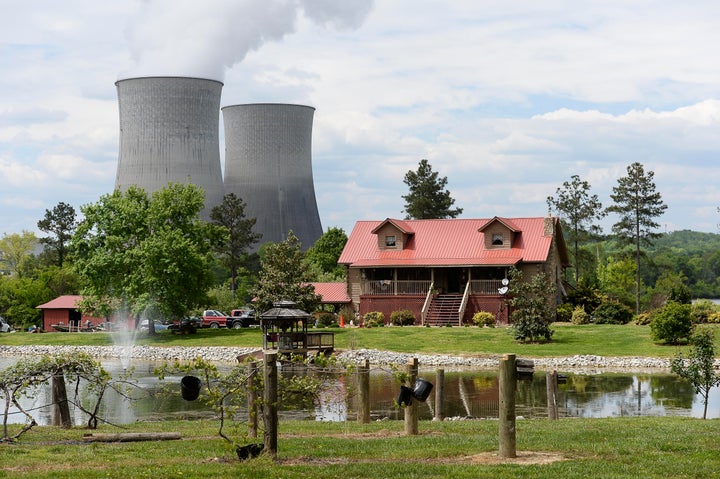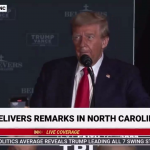
The Biden administration wants the United States to triple the global supply of nuclear power, with American-designed reactors running on fuel enriched in the West. The goal: Usurp Russia’s near monopoly on atomic energy exports, and keep China from gaining control of yet another green energy industry.
But there’s one big problem: The U.S. isn’t even building any more reactors at home.
After nearly 15 years of billion-dollar cost overruns and delays, the utility giant Southern Company just hooked the second of two new reactors at a power plant in Georgia up to the grid this week — the only two atomic energy units built from scratch in the U.S. in decades. Developers are shopping around all kinds of novel designs for new-age nuclear plants. Yet few utilities can afford — or persuade investors to put up the cash for — projects that can take a decade or more to complete.
Luckily for President Joe Biden, the federal government owns a massive power utility specifically designed to deploy large-scale infrastructure that remains out of reach for the market’s invisible hand. But building new megaprojects means borrowing money — and Congress hasn’t bothered to adjust the utility’s credit limit for inflation in 45 years.
Advertisement
Established almost exactly 91 years ago to electrify rural parts of the American South too poor to attract profiteering utilities, the Tennessee Valley Authority today generates and sells power to 153 local distributors that serve 10 million people in Tennessee and the surrounding region. The TVA’s seven reactors, spread out between three nuclear power plants, churned out 43% of its electricity in the past few months.
The TVA functions like any other independent power company. But the New Deal-era state corporation’s board of directors is appointed by the White House and its shares are owned by the federal government. That makes the TVA the closest thing the U.S. has to the kind of government-controlled entity that other countries have tasked with completing their own years-long nuclear megaprojects.
France, Japan, South Korea, the United Arab Emirates, Poland and Ukraine all use government ownership to build and operate nuclear energy plants. The Kremlin-owned Rosatom has only widened Russia’s lead over the U.S. in reactor and uranium fuel exports in recent years, while successfully deploying new technologies at home. China’s state utilities have built reactors at home faster than any other country, and the country now looks poised to begin exporting its reactor designs in direct competition with the U.S.
Putting the TVA at the cutting edge of the U.S. government’s nuclear revival strategy is from the U.S. Energy Information Administration. That same gas facility with hardware to capture at least 90% of its carbon emissions? $3,140 per kilowatt hour.
Solar panels with batteries would cost $1,808. Onshore wind? $2,098.
Now look at nuclear power. A traditional large light water reactor costs $7,777 per kilowatt hour. The federal researchers’ estimate for one of the newer small reactors amounts to a whopping $8,349 per reactor. Given how much longer it takes to build a nuclear reactor, those expenses ― and the interest on loans ― adds up quickly, a risk that few utilities operating in markets with limited options for financing large-scale projects are prepared to take.
But the “overnight costs” don’t tell the full story. Measured by the “levelized cost of energy,” a metric that factors in the cost of generating electricity from a plant throughout its operating lifetime, nuclear power makes more sense.
Absent subsidies for any sources, nuclear reactors would generate electricity almost as cheaply as solar panels and wind turbines, according to Lazard’s analysis. (The consultancy warned that the calculation may be inflated due to the limited number of new nuclear projects forcing its models to rely on high-cost data from the Vogtle project.)
“I think we need to do everything possible.”
– Rep. Chuck Fleischmann (R-Tenn.)
Advertisement
And even that dollar figure doesn’t account for recent breakthroughs in maintenance and part replacements that could allow modern nuclear reactors to operate for a century or more.
The TVA could be better positioned to soak up upfront costs than private utilities, who have a clearer conflict between stewarding investors’ money and gambling on costly projects for the greater good.
In states like New York, Texas and California, which broke up their giant monopoly utilities and created competitive markets for electricity, the steep upfront price tag makes building a new nuclear plant almost impossible without targeted government support.
Yet even in a traditionally-regulated market like Georgia, where Southern Company’s Georgia Power subsidiary enjoys an old-school monopoly, the debt the utility company incurred from building the new AP-1000s made it spike ratepayers’ bills. In South Carolina, where Westinghouse planned to build another two AP-1000s in the mid-2000s, the local utility went bankrupt and its top executives went to jail for lying about the ballooning cost.
The TVA, by contrast, has historically used the rates it collects from selling electricity to pay for maintenance and administrative costs, not new power plants.
Advertisement
The TVA itself was also launched to invest in power infrastructure the market deemed too risky. If the only way to drive down the cost of new reactors is for the U.S. to start rolling them out in bulk, it’s difficult to find many boards of directors prepared to sacrifice their companies’ profits at the altar of progress when waiting for a competitor to build their generators first might yield significant price savings. That makes the TVA — the only utility whose board is appointed by a president seeking to spur a nuclear revival, not by big business — a unique candidate for building reactors.
But that also puts particular scrutiny on the TVA’s financial decisions. The TVA’s borrowing shows up on the federal balance sheet, making the utility a perennial target of fiscal hawks looking to rein in the national debt.
In past administrations, the TVA’s debt may have been a factor in plans to sell off the utility to private investors. Amid a political feud with Republicans, former President Barack Obama proposed “reforming” the TVA, in a move widely interpreted as laying the groundwork for privatization. Former President Donald Trump openly pitched breaking up the TVA and selling off its parts.
Republican lawmakers whose states benefit from the TVA balked at Trump’s proposal in 2018. But Trump took a renewed interest in the TVA during his final year as president, abruptly firing the board chairman as part of a bid to oust Lyash as chief executive. Two of the most vocal GOP opponents of Trump’s privatization strategy – including former Sen. Lamar Alexander (R-Tenn.), who called the plan “loony” – are no longer in office. The presumptive Republican nominee for president, meanwhile, is already signaling plans to try again at selling off parts of the federal government.
Russia launched the world’s first seaborne mobile nuclear power plant in 2019 and now wants to begin exporting its atomic barges. Two years later, China completed the world’s first onshore small modular nuclear plant, which Beijing aims to sell overseas.
Advertisement
The Biden administration led more than a dozen countries in signing a pledge in November to triple the world’s supply of nuclear energy. But just a week earlier, the project meant to debut the first U.S. small modular reactors went bust in November.
Now, with the Senate voting this week to ban imports of Russian uranium, the U.S. wants to not only end its reliance on foreign nuclear fuel, but invite more of the world to depend on American technology to power the next wave of atomic buildouts. The country is already behind its rivals. The TVA might offer an avenue to catch up ― unless the election scrambles its plans.
Arthur Delaney contributed reporting from Washington.









